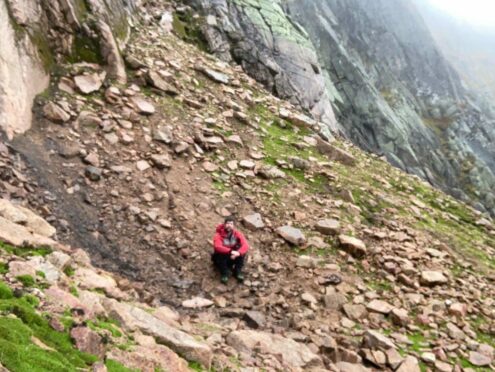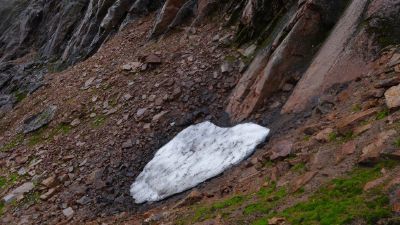A citizen scientist who has made regular trips to measure snow at the Sphinx in the Cairngorms says the fact it has vanished this year should be a warning to us all.
The snow at Garbh Choire Mòr is always closely watched, with records dating back to the 1700s as the UK’s longest lasting snow patch.
But author Iain Cameron – who studies ice patches across the country – confirmed last weekend that the snow has disappeared.
It is the fourth time in the last six years – whereas it had only melted five times since 1933, with no records of it melting before then.
The Sphinx sits on the north facing side of a remote mountainside in the Cairngorms, near the third-highest mountain in the British Isles.
An observer rather than a scientist
Describing himself as someone who is an observer rather than a scientist, Mr Cameron is Britain’s foremost expert on snow patches.
Originally from Port Glasgow and now based in Larbert, he has recently published The Vanishing Ice, a book that explores the history of Scotland’s ice patches.
On Friday night on Twitter, he confirmed it had melted again this year.
On social media, he said: “So there we have it. It is confirmed that Scotland is snow-free yet again.
“The last patch, the Sphinx, disappeared sometime in the last 24 hours. The Sphinx has now vanished four times in the last six years, having done so only five times in the last 300 years.
So there we have it. It is confirmed that Scotland is snow-free yet again. The last patch, the Sphinx, disappeared sometime in the last 24 hours. The Sphinx has now vanished four times in the last six years, having done so only five times in the last 300 years. (1/2) pic.twitter.com/KL8sfhL1uA
— Iain Cameron (@theiaincameron) October 7, 2022
He added: “So that’s 1933, 1959, 1996, 2003, 2006, 2017, 2018, 2021 and 2022 the Sphinx has vanished.
“I’m not a climatologist, nor even an academic, but it’s a pretty obvious direction of travel.
“The future for semi-permanent snows in Scotland looks bleak.”
Speaking to The Press and Journal, he added: “It has always been important to people that we monitor this patch of snow.
“People have seriously been looking at it for the last 100 years or so, and more informally it has been monitored since the 1700s.
“It is the longest lasting patch of snow up until 2018 and 2000 when snow on Aonach Beag lasted slightly longer. The patch at Garbh Choire Mòr is the most monitored area.”
Another wonderfully atmospheric day at Garbh Choire Mòr to check whether the last patch of snow in Scotland survived the recent deluges. Amazingly, the Sphinx continues to hang on for dear life. pic.twitter.com/VHEo4DDJNt
— Iain Cameron (@theiaincameron) October 2, 2022
Describing himself as an amateur and a citizen scientist, he said: “I have had a lifelong interest in snow and snow patches.
Change in climate
“I work in maltings for the whisky industry, so I don’t work in a related industry – it is just my passion.
“I try not to pontificate on what has caused this, there is a growing bank of evidence of a change in climate.
“For me it is persuasive evidence that the consequence of climate change is melting snow.”
While there has always been snow at the Sphinx, the disappearing snow has seen an increase in the numbers of people who climb on the mountain ranges around Scotland.
Mr Cameron continued: “One of the consequences of the promotion and awareness of the outdoors is more people are coming to visit.
“People have more leisure time and there are many more cars around. The numbers of climbers and the people who visit the hillside has increased.
“When I was first climbing I was often on the hills myself. These days I am seldom alone on a hill. “


Conversation